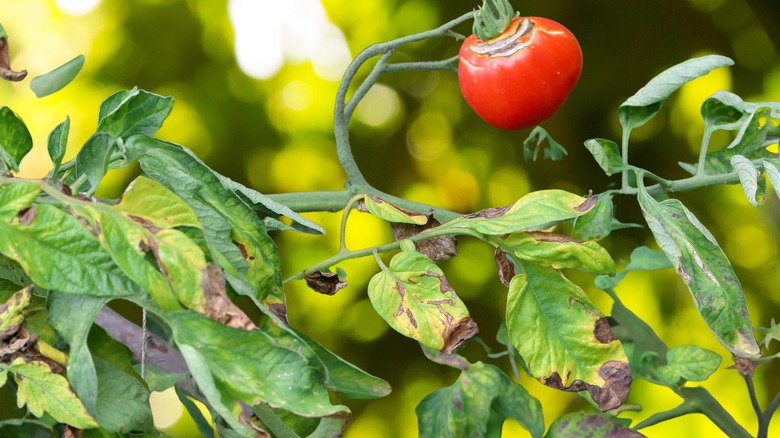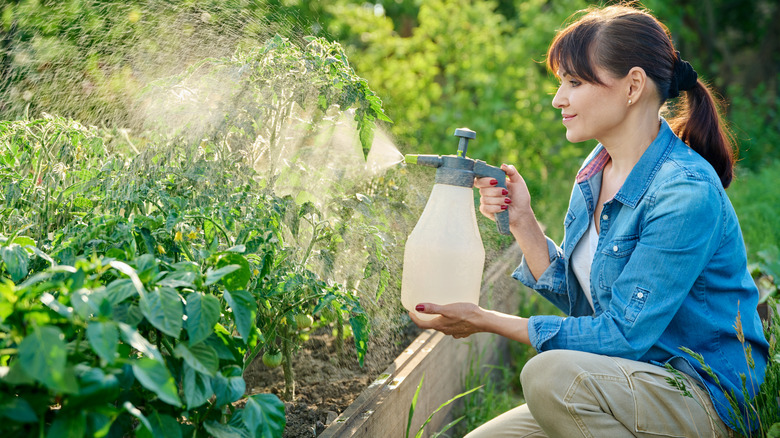The Hack People Use To Save Tomato Plants From Rust Disease (But Should You?)
Have you heard about the hack that gardeners are using to control rust disease on tomato plants? If you don't know what rust on tomatoes looks like, it appears as small dark spots on the leaves that can quickly spread and cover the surface. Traditionally, you would control rust disease to a certain degree by using a fungicide as a preventative. But a more natural solution is to use a diluted mixture of hydrogen peroxide which will actually kill the fungus itself.
Although this "hack" is appearing across social media as a new miracle cure for rust disease, using hydrogen peroxide as a fungicide and bactericide is nothing new. It's actually been used for many years in household cleaning products such as bleaches and mold killers. But if you want to use hydrogen peroxide to support your tomato plants, you'll need to get the right formulation and dilute it even further with water.
Hydrogen peroxide is a naturally occurring chemical that's made up of two molecules of water and two molecules of oxygen. Its chemical compound name is H2O2. As you can see, this is very similar to the chemical compound of water which is H2O — two molecules of water with one molecule of oxygen. This means that hydrogen peroxide is easily soluble in water. Back in 2002, the Environmental Protection Agency approved the use of hydrogen peroxide for controlling microbial pests such as fungi and bacteria on crops such as vegetables and fruits.
Tips for the safe use of hydrogen peroxide on tomato plants
A common mistake to avoid when using hydrogen peroxide is not diluting the product to make it less potent. You also need to select the correct type of hydrogen peroxide as there are different strengths available — 3% hydrogen peroxide is used in household products, 6 to 10% hydrogen peroxide is used in cosmetic products, 35% hydrogen peroxide is regarded as food-grade (though not for eating!), and 90% hydrogen peroxide is used in industrial products. When using a new product on your plants, always spray a small area first and then wait two to three days in case there's an adverse reaction.
To spray your tomato plants, it's highly recommended that you use the 3% hydrogen peroxide and dilute this even further with water. A recommended dilution that shouldn't harm your plants but is still effective is 6 ounces or 12 tablespoons of 3% hydrogen peroxide mixed in a gallon of water. Put this mixture into a spray bottle and use it to spray all the leaves and stems on your tomato plants, making sure to cover both the tops and the undersides of the leaves. This should kill off the fungus and stop it from spreading.
When making up your mixture, make sure that you wear gloves because the hydrogen peroxide can irritate your skin if you come into contact with it.

